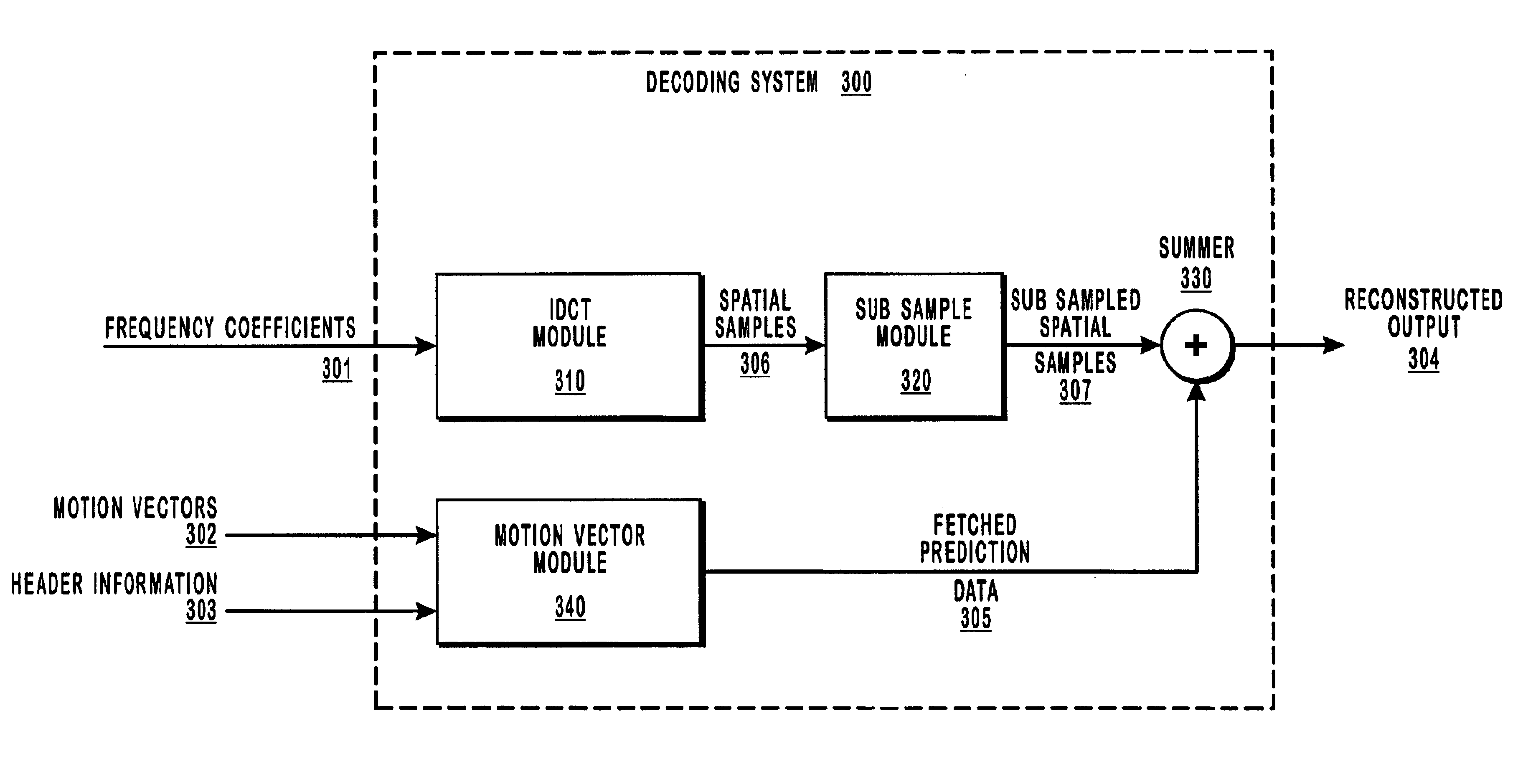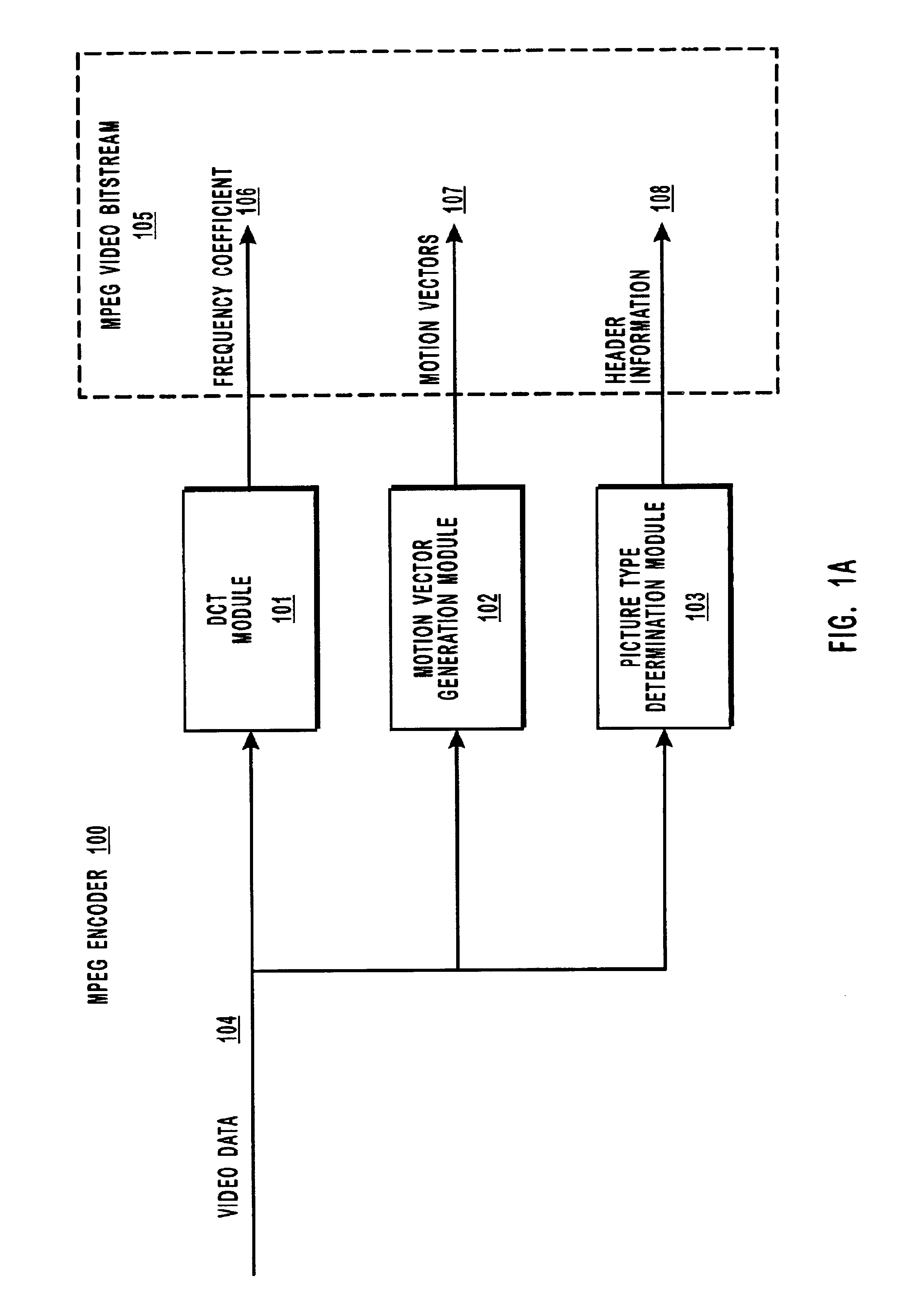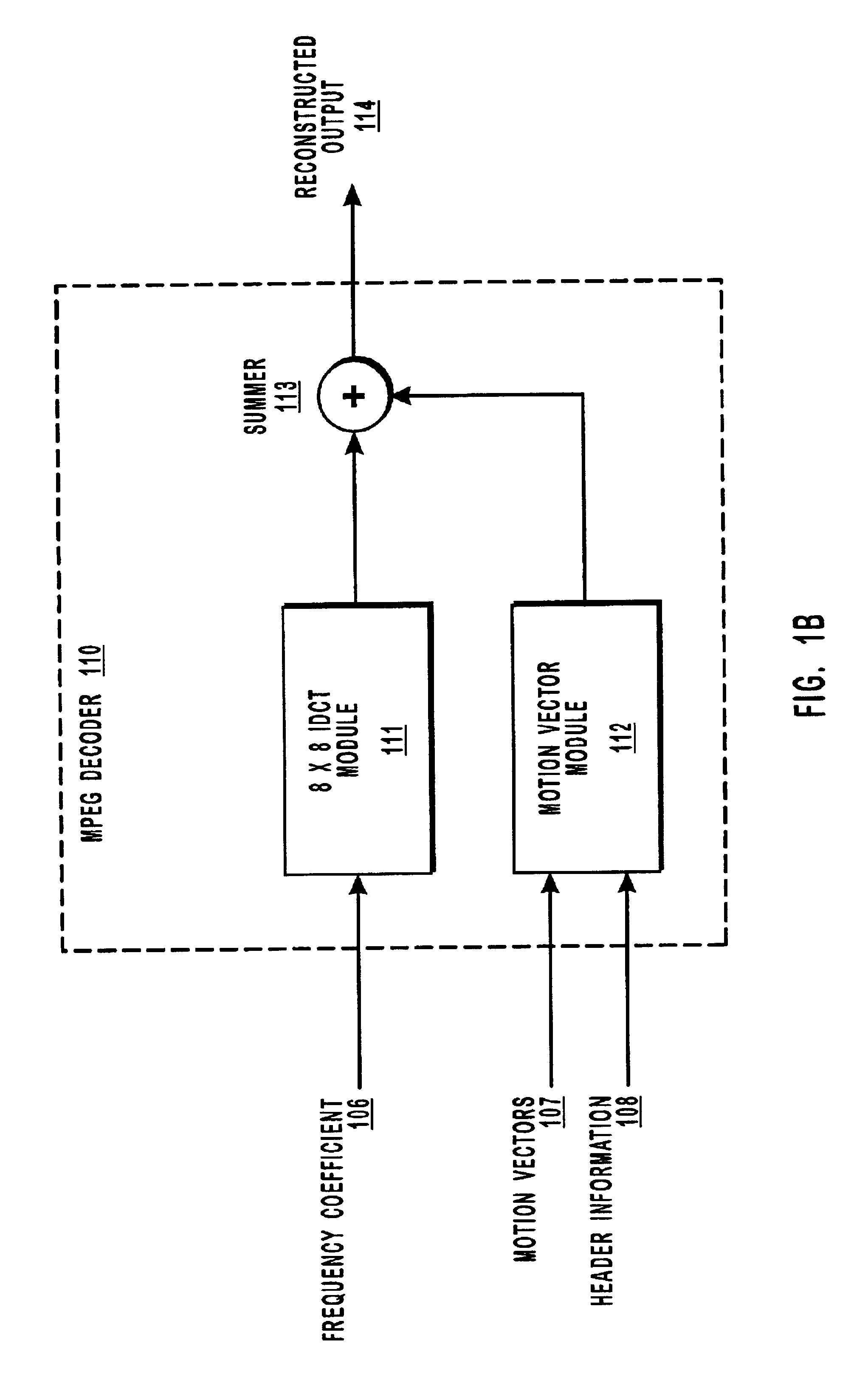Systems and methods for MPEG subsample decoding
a subsample and subsample technology, applied in the field of digital video, can solve the problems of wasting memory resources and computational resources, unable to support any and all desired output resolutions simultaneously in a broadcast environment, and limited terrestrial channel allocations
- Summary
- Abstract
- Description
- Claims
- Application Information
AI Technical Summary
Benefits of technology
Problems solved by technology
Method used
Image
Examples
Embodiment Construction
The present invention extends to both methods and systems for subsampling and displaying video images that have been encoded using an HDTV format and in an MPEG video bit stream on a device of lower resolution, such as standard television, or on a picture-in-picture display. The embodiments of the present invention may comprise a special purpose or general-purpose processing device or computer including various computer hardware components, as discussed in greater detail below. The embodiments may further comprise multiple computers linked in a networked environment. Set top boxes that enhance the capabilities of conventional televisions represent an example of a special purpose computer.
Embodiments within the scope of the present invention also include computer-readable media for carrying or having computer-executable instructions or data structures stored thereon. Such computer-readable media can be any available media that can be accessed by a general purpose or special purpose c...
PUM
 Login to View More
Login to View More Abstract
Description
Claims
Application Information
 Login to View More
Login to View More - R&D
- Intellectual Property
- Life Sciences
- Materials
- Tech Scout
- Unparalleled Data Quality
- Higher Quality Content
- 60% Fewer Hallucinations
Browse by: Latest US Patents, China's latest patents, Technical Efficacy Thesaurus, Application Domain, Technology Topic, Popular Technical Reports.
© 2025 PatSnap. All rights reserved.Legal|Privacy policy|Modern Slavery Act Transparency Statement|Sitemap|About US| Contact US: help@patsnap.com



